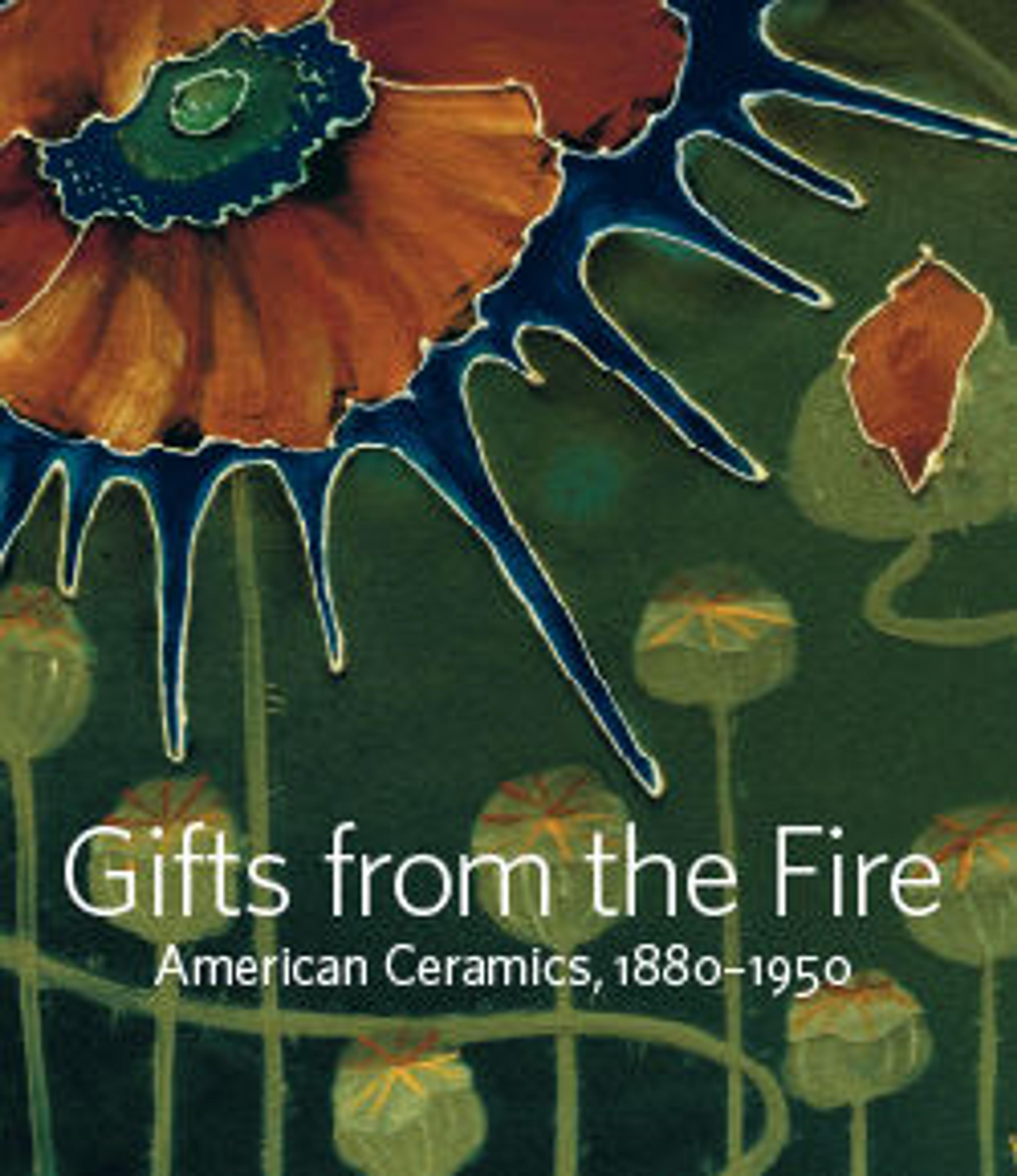Paperweight with lizard and lotus leaf
It was at the Rookwood Pottery that the drive toward more organic, plant-based forms found fruition in American art pottery. Whether it was a result of the general zeitgeist of 1900 or more specific influences from Europe, some Rookwood artists gradually freed their designs from the constraints of wheel-based forms and painted decoration. A small paperweight designed by Kataro Shirayamadani, depicting a lizard momentarily alighting on a leaf, is a charming example of the sort of sculptural object that Rookwood began producing after the turn of the century.
The intimacy of the small lizard clambering about the leaf is similar to designs observed in Japanese netsuke, where the humblest members of the animal kingdom became the subject of endlessly charming variations. Rookwood was not the only pottery to mimic the playful, sculptural compositions of these small toggles. The Royal Copenhagen pottery in Demark produced a popular line of realistic animal sculptures in the early twentieth century. The popularity of these Japanese-inspired objects with European and American consumers reflected their longstanding fascination with Japanese art.
The intimacy of the small lizard clambering about the leaf is similar to designs observed in Japanese netsuke, where the humblest members of the animal kingdom became the subject of endlessly charming variations. Rookwood was not the only pottery to mimic the playful, sculptural compositions of these small toggles. The Royal Copenhagen pottery in Demark produced a popular line of realistic animal sculptures in the early twentieth century. The popularity of these Japanese-inspired objects with European and American consumers reflected their longstanding fascination with Japanese art.
Artwork Details
- Title:Paperweight with lizard and lotus leaf
- Decorator:Decorated by Kataro Shirayamadani (American (born Japan), Tokyo 1865–1948 Cleveland, Ohio)
- Manufacturer:Rookwood Pottery Company (American, Cincinnati, Ohio 1880–1967)
- Date:1904
- Geography:Made in Cincinnati, Ohio, United States
- Culture:American
- Medium:Earthenware
- Dimensions:H. 1 in.; L. 5 3/4 in.
- Credit Line:Gift of Martin Eidelberg, 2020
- Object Number:2020.64.133
- Curatorial Department: The American Wing
More Artwork
Research Resources
The Met provides unparalleled resources for research and welcomes an international community of students and scholars. The Met's Open Access API is where creators and researchers can connect to the The Met collection. Open Access data and public domain images are available for unrestricted commercial and noncommercial use without permission or fee.
To request images under copyright and other restrictions, please use this Image Request form.
Feedback
We continue to research and examine historical and cultural context for objects in The Met collection. If you have comments or questions about this object record, please contact us using the form below. The Museum looks forward to receiving your comments.
